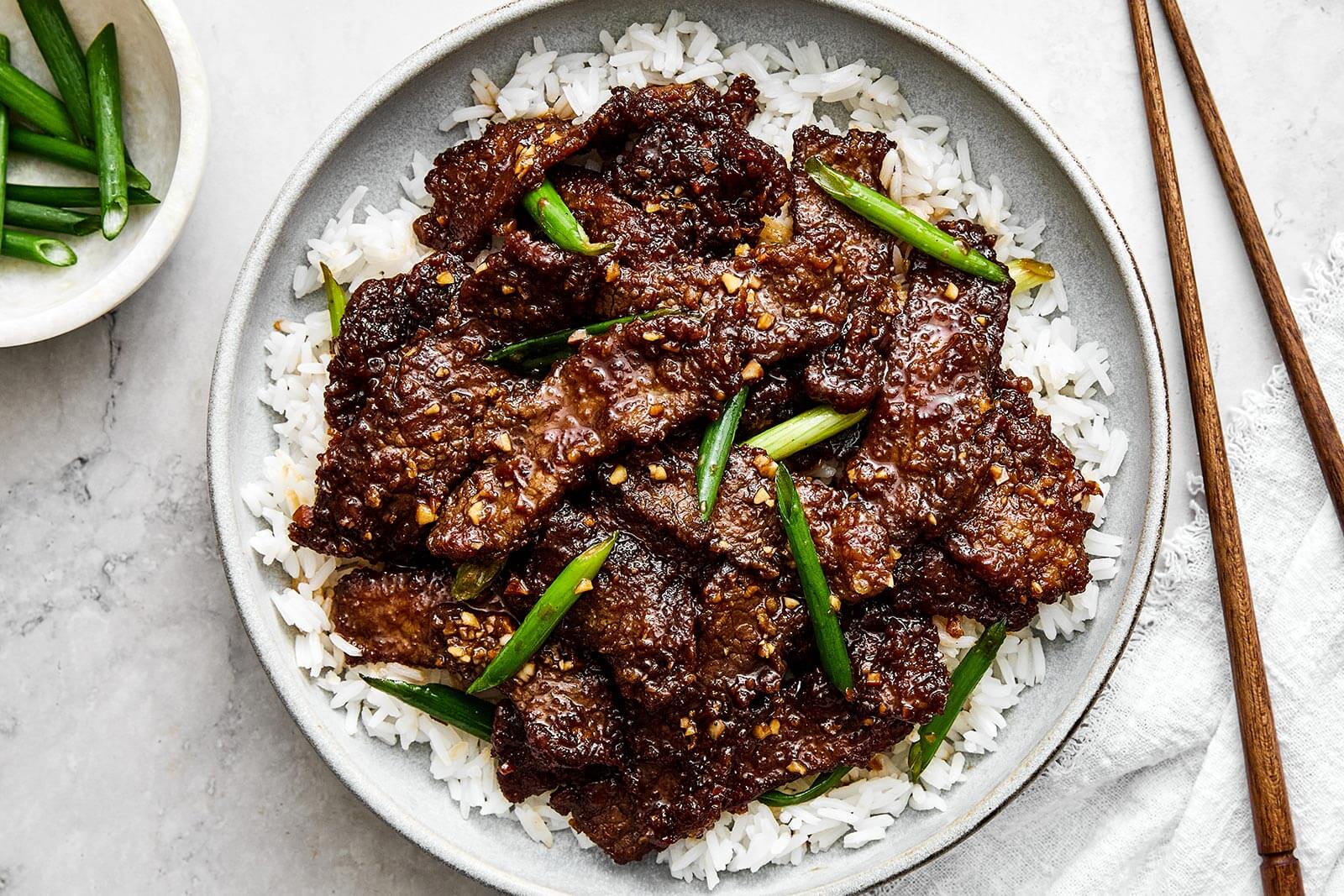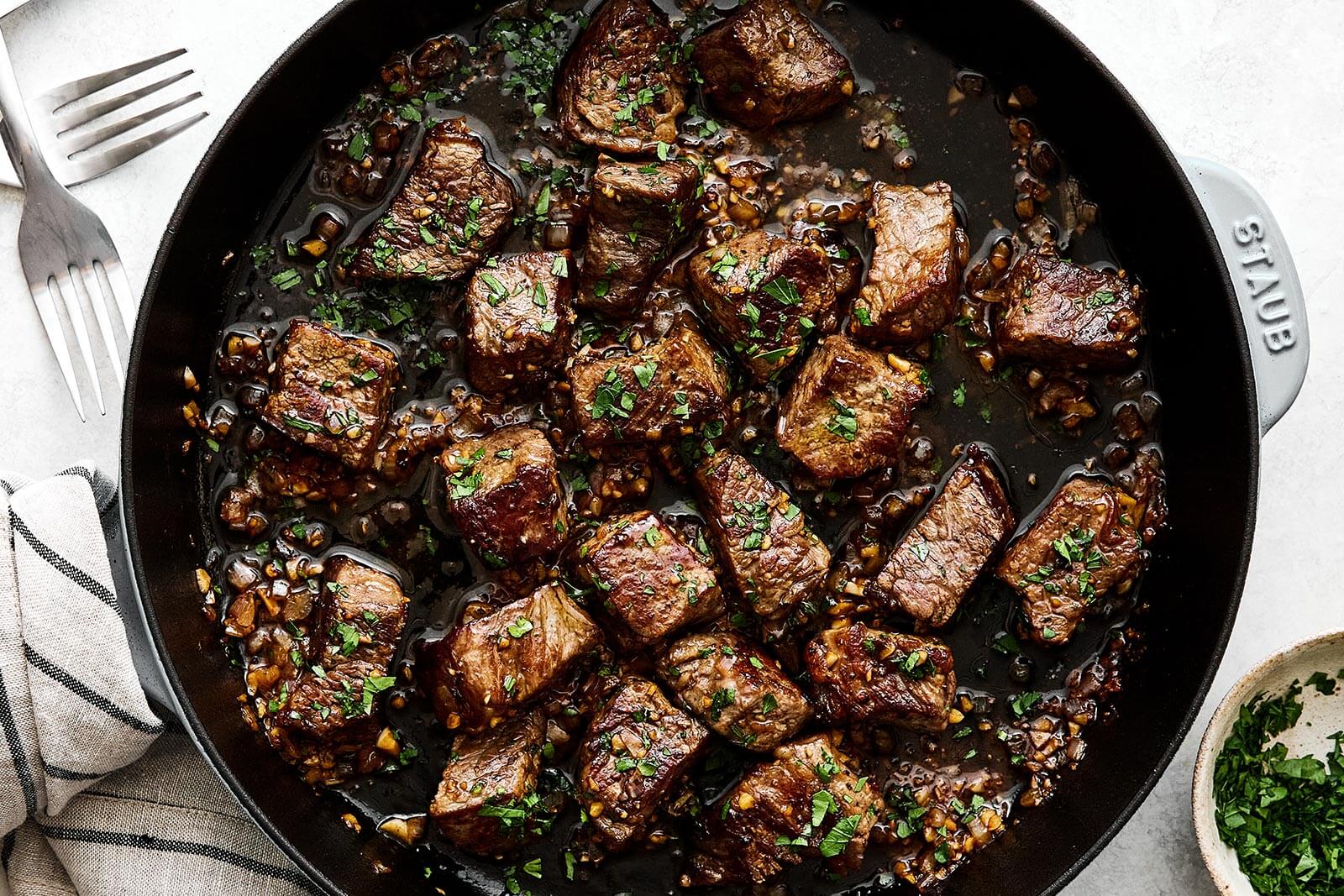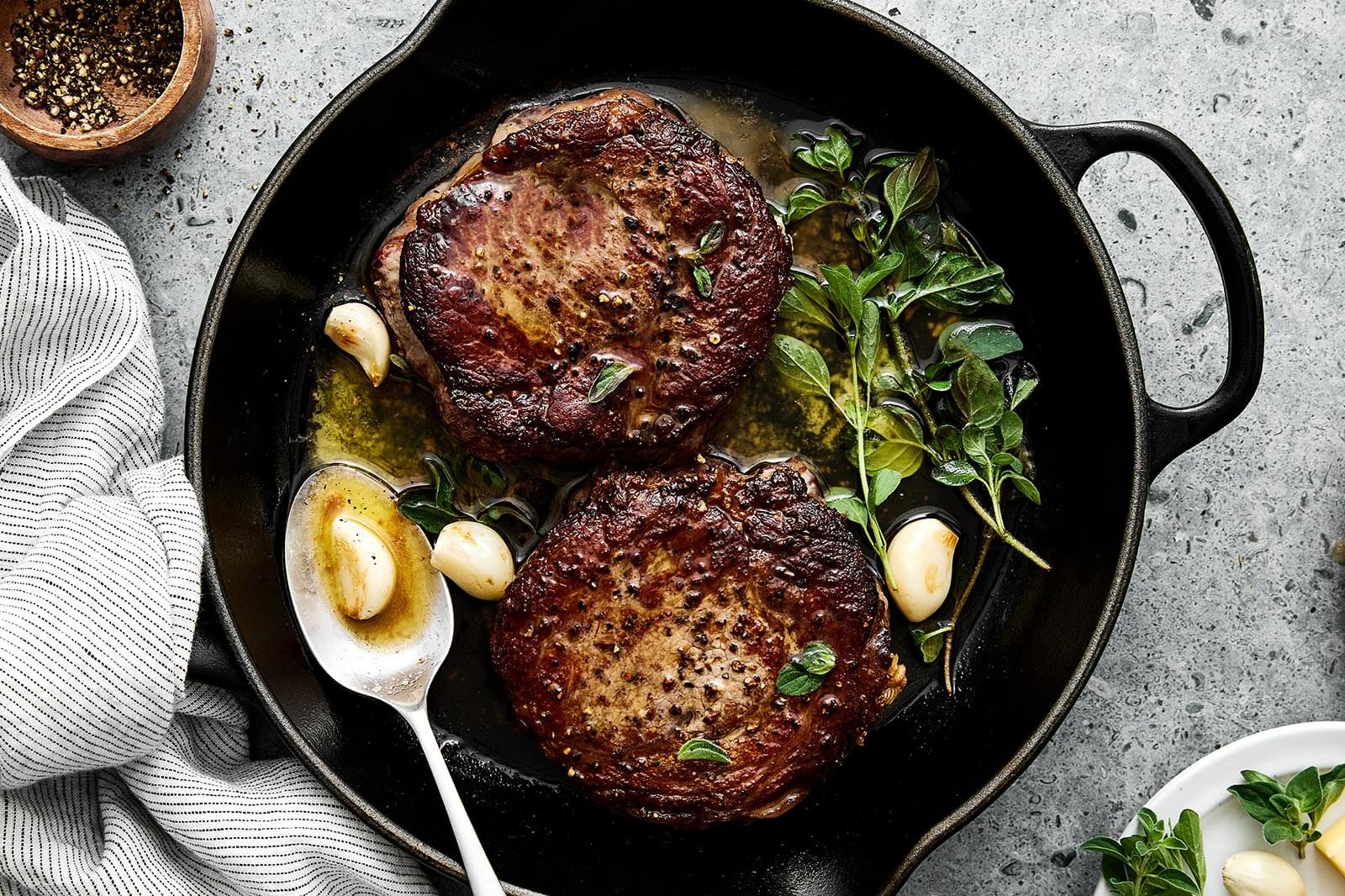This Mongolian beef is one of my all-time favorite dinners. Seared flank steak is tossed with a rich, sticky sweet sauce with sliced green onions, then paired with rice or noodles for the most delicious Chinese takeout at home.

Why You’ll Love This Mongolian Beef
The first time I made this Mongolian beef recipe, I knew immediately it would rival any Chinese restaurant’s version (yes, even P.F. Chang’s). The steak is perfectly tender and the sauce is SO GOOD—like a savory-sweet Asian beef jerky with a rich umami flavor. I’ve definitely nibbled away two servings in one sitting! And while there are plenty of variations of this dish online, here’s why you’ll love my version:
- It’s quick and easy. It only takes about 30 minutes from start to finish, with most of the time spent prepping the ingredients. But once it hits the wok, 15 minutes is all you need, just like my chicken stir-fry, Kung Pao chicken, or pepper steak stir-fry from my cookbook. That’s the beauty of stir-fry recipes!
- No brining or velveting is needed. Sure, restaurants might get a bit fancy by brining the steak overnight or velveting the meat, but I don’t think it’s necessary for incredible Mongolian beef at home. Plus, skipping these steps saves you hours of prep time!
- It’s a crowd-pleaser. I’ve made this recipe countless times for friends and family, and they’re always hopping for leftovers (spoiler: there aren’t any).
Easy Mongolian Beef Ingredients


- For the Mongolian beef: Flank steak is typically used for its lean and tender texture, and distinct beefy flavor. But you can also use sirloin steak or skirt steak—as long as it’s a tender, quick-cooking cut of beef.
- For the Mongolian beef sauce: This is my favorite part—a rich and delicious blend of soy sauce (tamari soy sauce if you’re gluten-free), coconut sugar, water, sesame oil, blackstrap molasses, fresh ginger, and garlic. Check the recipe card for more notes on the sugar, sesame oil, and blackstrap molasses.
Find the printable recipe with measurements below.
How To Make Mongolian Beef
Prep the sauce. In a medium bowl, stir together the soy sauce, sugar, water, sesame oil, molasses, ginger, and garlic. Set aside.


Slice and coat the steak. Slice the steak in half lengthwise, then slice crosswise against the grain into thin strips. Then, toss the sliced flank steak with cornstarch in a mixing bowl, shake off any excess powder, and set aside.


Cook the steak. Heat the oil in a large skillet or wok over medium-high heat by pouring it around the sides to evenly coat the insides of the wok. Then, cook the steak in small batches for 30 to 60 seconds on each side for a nicely browned crust. I show two different ways to do this on the video below! And if more oil is needed, feel free to add a splash more oil in between batches.


Simmer the sauce. Reduce the heat to medium, pour in the sauce, and let it simmer for 4 to 5 minutes while stirring occasionally. It should reduce and thicken slightly.


Toss everything together. Add the steak back to the wok and stir with the sauce until the meat is fully coated, and the sauce has reduced into a glaze, about 1 to 2 minutes more. Sprinkle the sliced green onions on top and give it one final stir before serving.


Common Questions
Traditionally, woks are the best for stir-frying ingredients at high heat. And I do love my carbon steel wok that’s linked in the recipe card below. But you can use any larger pan to make this Mongolian beef, whether that’s a cast iron skillet or a stainless steel pan. Just avoid using non-stick pans, given the high heat.
Yes, absolutely! Another tasty variation I’ve made is stir-frying sliced red bell peppers with garlic and sesame oil, then tossing them with the sauce and beef.
Ways To Serve Mongolian Beef
My favorite way to round out this meal is to serve it with white rice (to absorb all that delicious sauce) and stir-fry garlic green beans. But here are a few other options for carbs and vegetables:
- Noodles: While ramen noodles, stir-fried lo-mein or chow-mein noodles might be more traditional, rice noodles are great alternatives (or even fried rice) if you’re gluten-free like me.
- Warm Vegetables: Besides the stir-fried green beans, I love making a quick side of this garlic ginger bok choy, roasted broccoli, or sautéed cabbage.
- Salads: When I want a refreshing side, an Asian cucumber salad with a dash of chili oil or an Asian slaw with a sesame miso dressing is my go-to.


More Asian Dinner Ideas
If you make this Mongolian beef recipe, I’d love to hear how this turned out in the comment box below. Your review will help other readers in the community. And if you’re hungry for more healthy food inspiration (and exclusive content), join my free newsletter.
Description
This Mongolian beef is the most delicious stir-fry dinner at home! The steak is perfectly tender and tossed in the best sticky sweet sauce. Watch how I make this in my kitchen in the video below!
-
Prep the sauce. In a medium bowl, stir together the soy sauce, sugar, water, sesame oil, molasses, ginger, and garlic. Set aside.
-
Slice the steak. Slice the steak in half lengthwise, then slice crosswise against the grain into thin strips.
-
Prep the steak. In a mixing bowl, toss the sliced flank steak with the cornstarch, shake off any excess, and then set aside on a separate plate.
-
Cook the steak. Heat the oil in a large skillet or wok over medium-high heat. Add the steak to the wok and cook in small batches, for about 30 to 60 seconds on each side, until browned. Remove the cooked steak to a plate, and repeat this process until all of the steak is cooked. If needed, add a splash of more oil to the wok in between batches.
-
Simmer the sauce. Reduce the heat to medium, add the sauce, and let it simmer for 4 to 5 minutes, stirring occasionally, until slightly thickened.
-
Finish the Mongolian beef. Add the steak back to the wok, and stir with the sauce for 1 to 2 minutes, to reduce the sauce further and fully coat the meat. Sprinkle the sliced green onions on top, and give it one final stir before serving.
- If you’d like a little extra heat, add a sprinkle of red pepper flakes at the end.
- You can substitute the coconut sugar and molasses for brown sugar (which is simply processed white sugar already mixed with molasses).
- Storing in the fridge: Let the beef cool completely before storing it in an airtight container in the fridge for 3 to 4 days.
- Freeze for later: If you have a large batch, divide it into smaller portions before freezing to make reheating more convenient. Store in a freezer-safe container for up to 3 months.
Calories: 339kcal | Carbohydrates: 24g | Protein: 28g | Fat: 15g | Saturated Fat: 3g | Polyunsaturated Fat: 2g | Monounsaturated Fat: 8g | Cholesterol: 68mg | Sodium: 1710mg | Potassium: 513mg | Fiber: 1g | Sugar: 11g | Vitamin A: 90IU | Vitamin C: 3mg | Calcium: 46mg | Iron: 3mg
©Downshiftology. Content and photographs are copyright protected. Sharing of this recipe is both encouraged and appreciated. Copying and/or pasting full recipes to any social media is strictly prohibited.


Behind The Scenes
If you follow my Instagram stories you saw that I tested this recipe several times before sharing it. The first time I added extra cornstarch to the sauce, which wasn’t needed and actually made the sauce too thick, with a starchy mouthfeel. So I omitted that. And the second time I tested it I added sesame oil based on feedback from a friend of mine, who is Chinese. That little tweak made the glaze really pop with flavor and shine! The photo above isn’t the best (welcome to recipe testing late at night with overhead kitchen lights, lol), but just know that my recipes go through several rounds of testing before they ever make it to the website. And yes, I always eat the recipe testing leftovers. No food waste around here!





